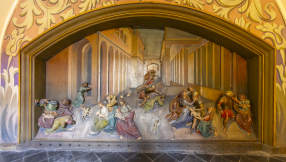
Lee Strobel, bestselling author of "The Case for Christ", is now celebrating his 34<sup>th Easter as a Christian. This, after spending his life prior to the book and his investigation into the reliability of Gospels as an atheist. After finding faith many years ago, he remains as convinced as ever in the truth of Jesus's death and resurrection.
While still an atheist, it was his background as a journalist that prompted Strobel to investigate and conduct extensive research into Christ with the help of religious and historical expert. He originally embarked on the project to discredit the veracity of Christ's resurrection and dissuade his recently converted wife from life as a Christian, but in the end he was the one who was powerfully converted.
"For nearly two years, I explored the minutia of the historical data on whether Easter was myth or reality. I didn't merely accept the New Testament at face value; I was determined only to consider facts that were well-supported historically. As my investigation unfolded, my atheism began to buckle," he recounted in an article for Stream.
One of the first pieces of evidence he gathered was actually from atheist historian Gerd Lüdemann who declared Jesus' death by crucifixion "indisputable." This was supported by a thorough study by A. N. Sherwin-White of Oxford, who himself cited ancient eyewitness accounts of Jesus' death.
As more evidence piled up that built the timeline for the events surrounding Jesus' death and resurrection, Strobel recounted scholar Willian Lane Craig's position that it would be unlikely for the story of the empty tomb to explode with no basis since its location was known to all and could have been verified by supporters of the idea and naysayers alike.
But even Jesus' opponents said that the tomb was empty, saying that the body was taken, although there was none who had a clear motive for doing so.
"We have nine ancient sources, inside and outside the New Testament, that confirm the apostles' conviction that they encountered the resurrected Christ. Repeatedly, these sources stood strong when I tried to discredit them. Could these encounters have been hallucinations? No way, experts told me. Hallucinations occur in individual brains, like dreams, yet Jesus appeared to groups of people on three different occasions – including 500 at once!, " Strobel said.
In the end, Strobel, a man armed with logic,education and skepticism, was finally convinced by the overwhelming evidence laid out in front of him and he completely embraced the truth not because he was afraid of death or needed a psychological crutch but because of the facts.
"I read books by skeptics, but their counter-arguments crumbled under the weight of the historical data. No wonder atheists so often come up short in scholarly debates over the resurrection. In the end, after I had thoroughly investigated the matter, I reached an unexpected conclusion: it would actually take more faith to maintain my atheism than to become a follower of Jesus," he said.













